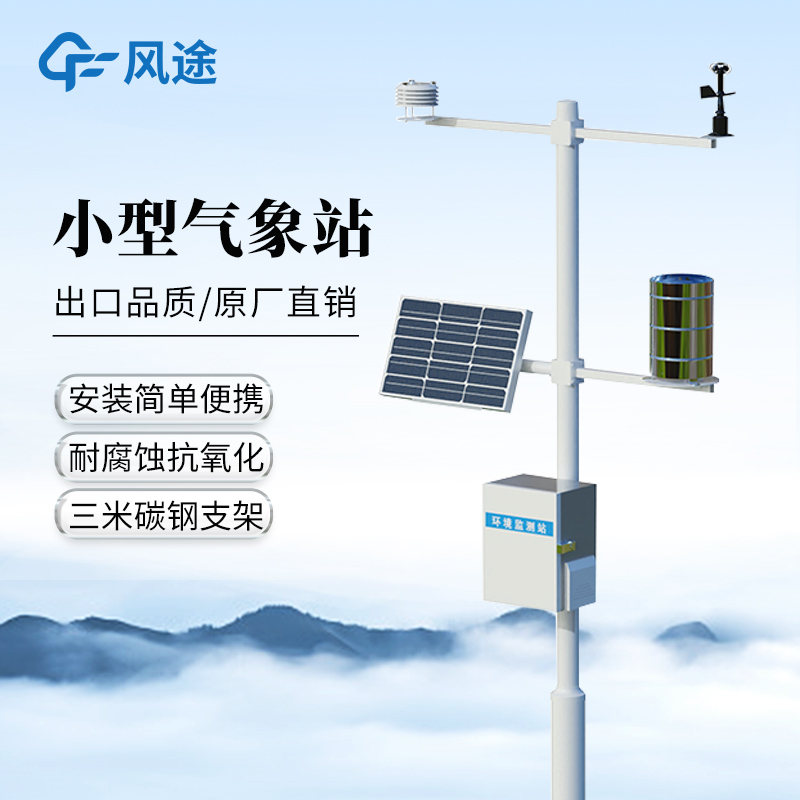Tianyi Sensor IOT Technology Co., Ltd
Sales Manager:Ms. Emily Wang
Cel,Whatsapp,Wechat:+86 15898932201
Email:info@fengtutec.com
Add:No. 155 Optoelectronic Industry Accelerator, Gaoxin District, Weifang, Shandong, China

Sales Manager:Ms. Emily Wang
Cel,Whatsapp,Wechat:+86 15898932201
Email:info@fengtutec.com
Add:No. 155 Optoelectronic Industry Accelerator, Gaoxin District, Weifang, Shandong, China
time:2025-05-23 09:56:59 source:Weather Station viewed:202 time
As a key device in modern meteorological monitoring, one of the primary advantages of the wireless Small Automatic Weather Station is its adoption of wireless data transmission technology.
1. Freedom from Wired Infrastructure Limitations
Traditional wired weather stations are constrained by cabling, but the wireless Small Automatic Weather Station overcomes this hurdle. In challenging terrains such as remote mountainous regions, oceans, or deserts, laying communication cables is not only extremely difficult but also costly. By utilizing wireless communication technologies like GPRS and LoRa, this station enables seamless long-distance data transmission without the need for complex cable installation. This drastically reduces the construction complexity and costs of weather stations, allowing them to be widely deployed in inaccessible areas and effectively filling gaps in meteorological monitoring networks.
2. High Flexibility and Scalability
Meteorological monitoring requirements vary across geographies, seasons, and research objectives. The wireless Small Automatic Weather Station offers unmatched flexibility, allowing rapid and agile deployment or reconfiguration in different locations. For instance, to set up temporary monitoring at large outdoor events or field research sites, users can simply transport the device to the target location and activate it. Furthermore, when new monitoring parameters need to be added or integration with other devices is required, adjustments can be made through software configuration and wireless communication optimization—no complex rewiring is necessary. This adaptability makes it ideal for dynamic application scenarios.
3. Real-Time and Stable Data Transmission
Timeliness is critical for meteorological data, particularly in weather forecasting and disaster early warning. Wireless communication technologies ensure that data collected by the station—including temperature, humidity, air pressure, wind speed, and wind direction—is transmitted to meteorological data centers in real-time or near-real-time. This instantaneous data flow enables prompt analysis and decision-making, enhancing the effectiveness of weather-related predictions and emergency responses.

Hydrological flow monitoring equipment plays a crucial role in water conservancy work, helping us grasp the dynamics of water resources and facilitating flood control, water dispatch, and other tasks. Below is a detailed introduction to common equipment.Water Level Monitoring StationThe battery-powe...
Tianyi specializes in the research, development and production of meteorological monitoring equipment, with profound technical strength and rich experience in the field of Automatic Farmland Weather Station. The weather stations produced by the company feature high-precision sensors and are made of...
With the advancement of environmental science research toward refinement, traditional large-scale air monitoring stations suffer from low distribution density and limited coverage, making it difficult to capture air quality differences in small-scale areas such as urban functional zones and around p...
Portable Weather Station features a highly integrated design, incorporating the monitoring functions of multiple meteorological elements. Take the best-selling FT-PQX6 as an example. It is equipped with a six-element integrated sensor, which can conduct real-time and accurate observations of meteoro...